Abstract
An effort to examine certain aspects of the adaptation in potassium excretion associated with nephron reduction was made in dogs with unilateral remnant kidneys. A constant intake of potassium was maintained by tube feeding and studies were performed before and after removal of the intact control kidney. The removal of the intact kidney created the need for the remaining nephrons of the remnant kidney to increase their rate of potassium excretion markedly. Sodium intake was held constant either at a normal or a low level. Mineralocorticoid hormone activity was maintained either at a high level by the administration of 0.2 mg 9-α-fluorohydrocortisone daily or at a low level by performing bilateral adrenalectomy and administering a minimal maintenance dose of deoxycorticosterone acetate (DOCA) and cortisol. Potassium excretion per nephron increased strikingly within 18 hr of contralateral nephrectomy and by 7 days, excretion rates were 600% of control values for the remnant kidney. More potassium was excreted in the first 5 hr after administration of a test dose of potassium by the remnant kidney alone in the postnephrectomy state than by both the remnant and intact kidneys in the prenephrectomy state. 24 hr excretion of potassium by the remnant kidney postnephrectomy averaged 92% of the administered load of potassium. The adaptation in potassium excretion was independent of the concurrent rate of sodium excretion and of mineralocorticoid hormone activity and persisted during constriction of the renal artery, a stimulus which presumably decreased distal delivery of sodium. The adaptation and the continued modulation of potassium excretion could not be explained adequately by an increase in impermeant anion excretion per nephron. Finally, known changes in hydrogen ion excretion per nephron associated with nephron reduction are in a direction opposite to those which would explain the acquired kaliuresis per nephron.
Full text
PDF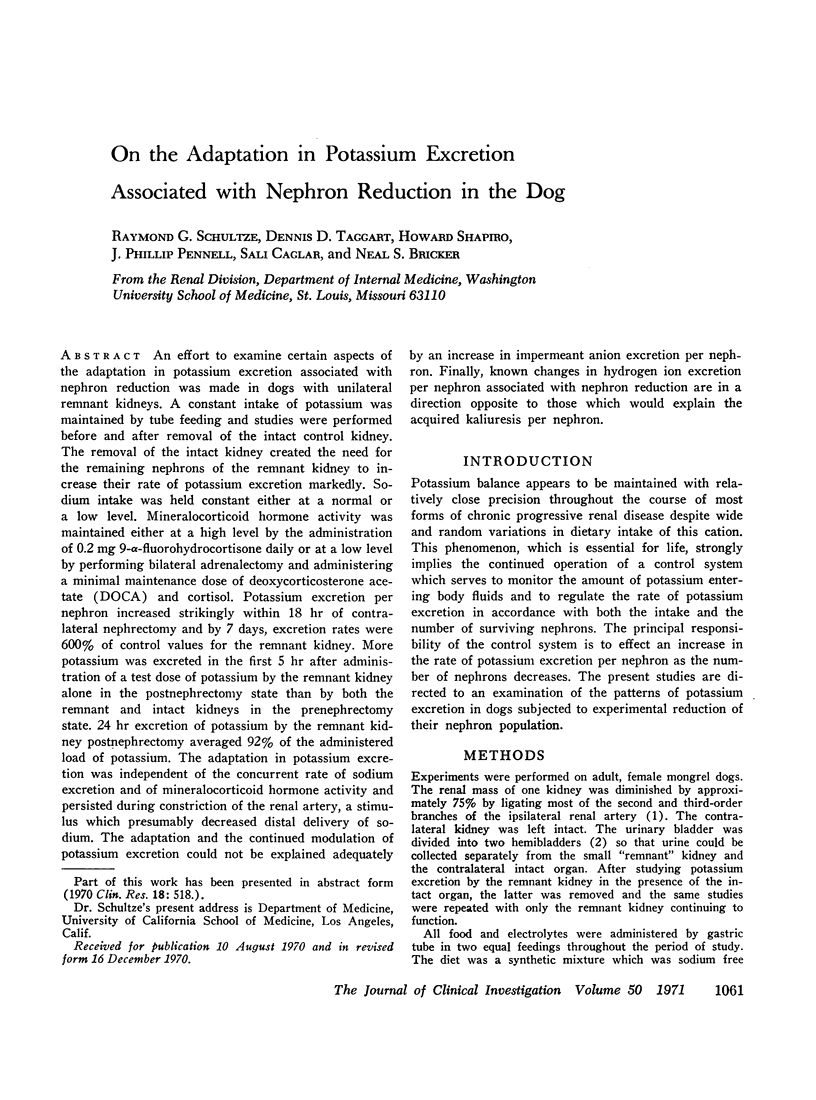
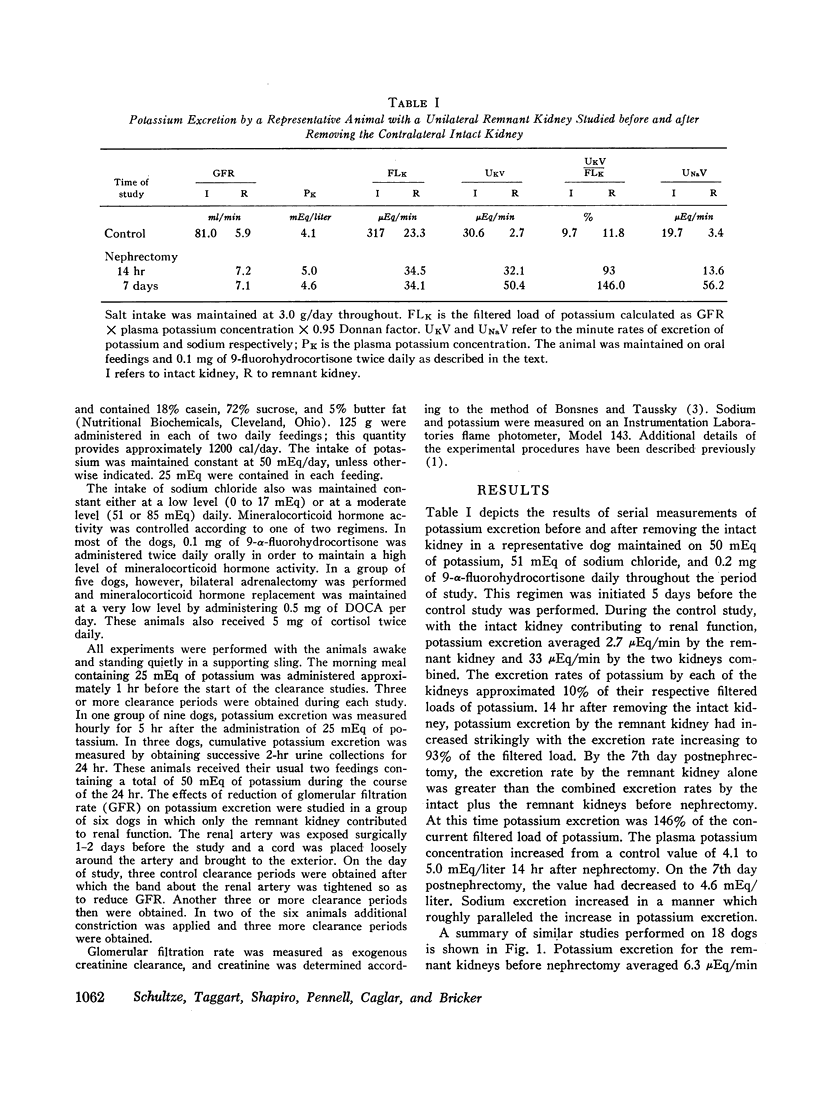
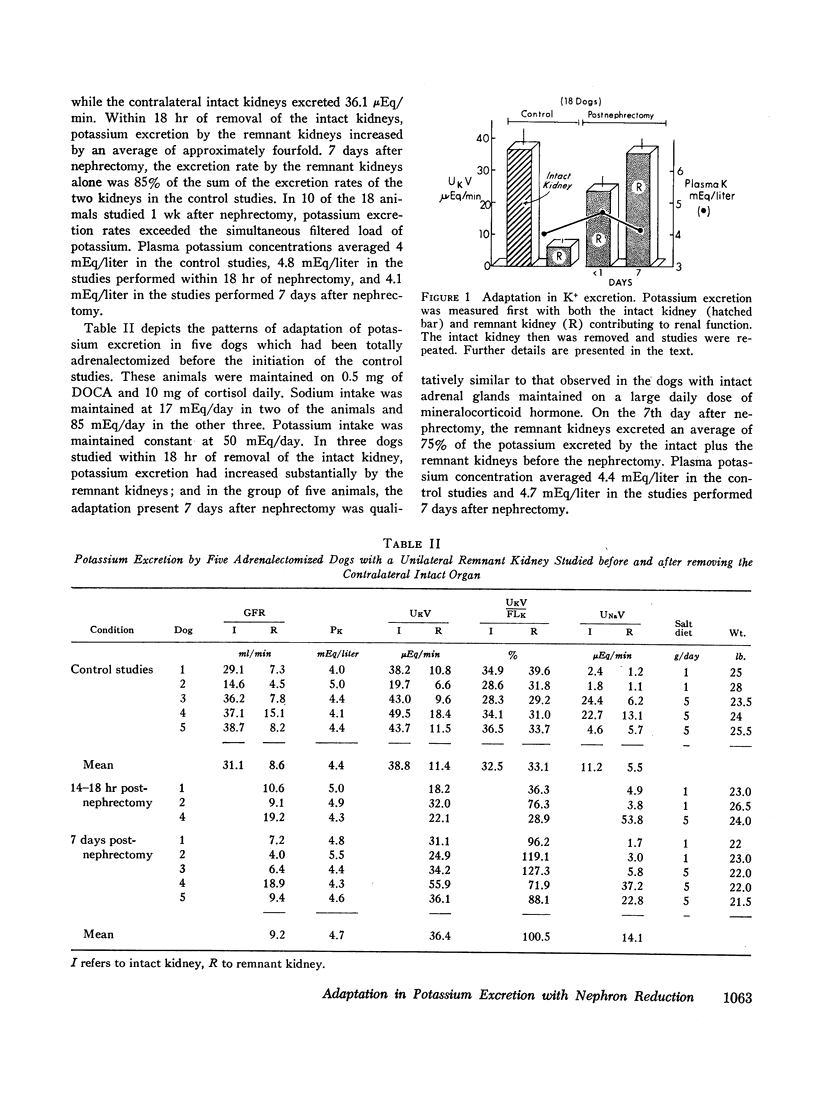
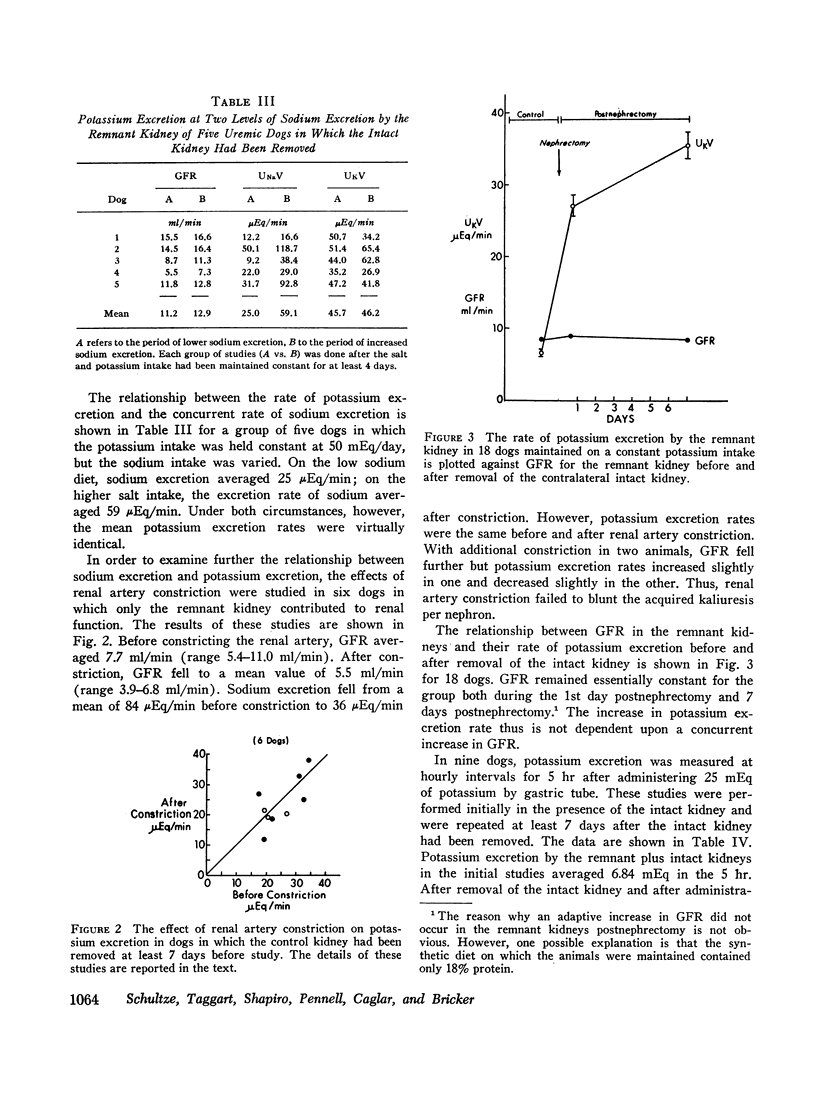
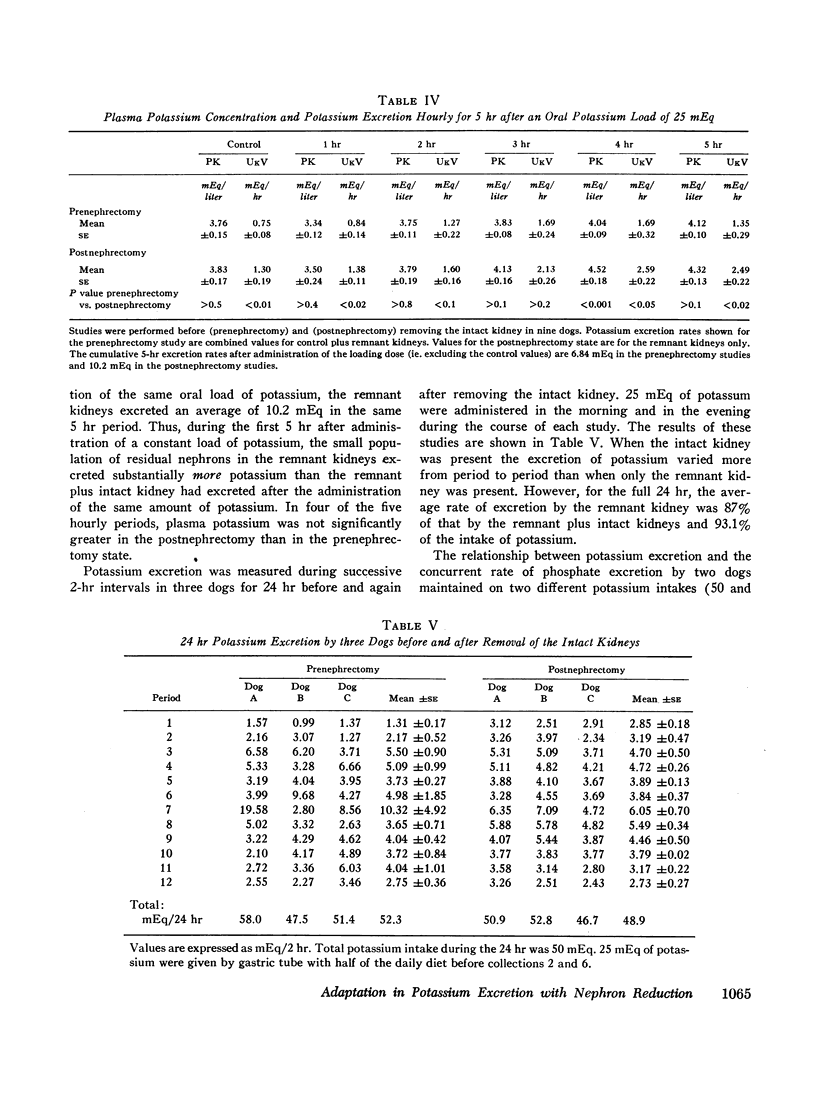
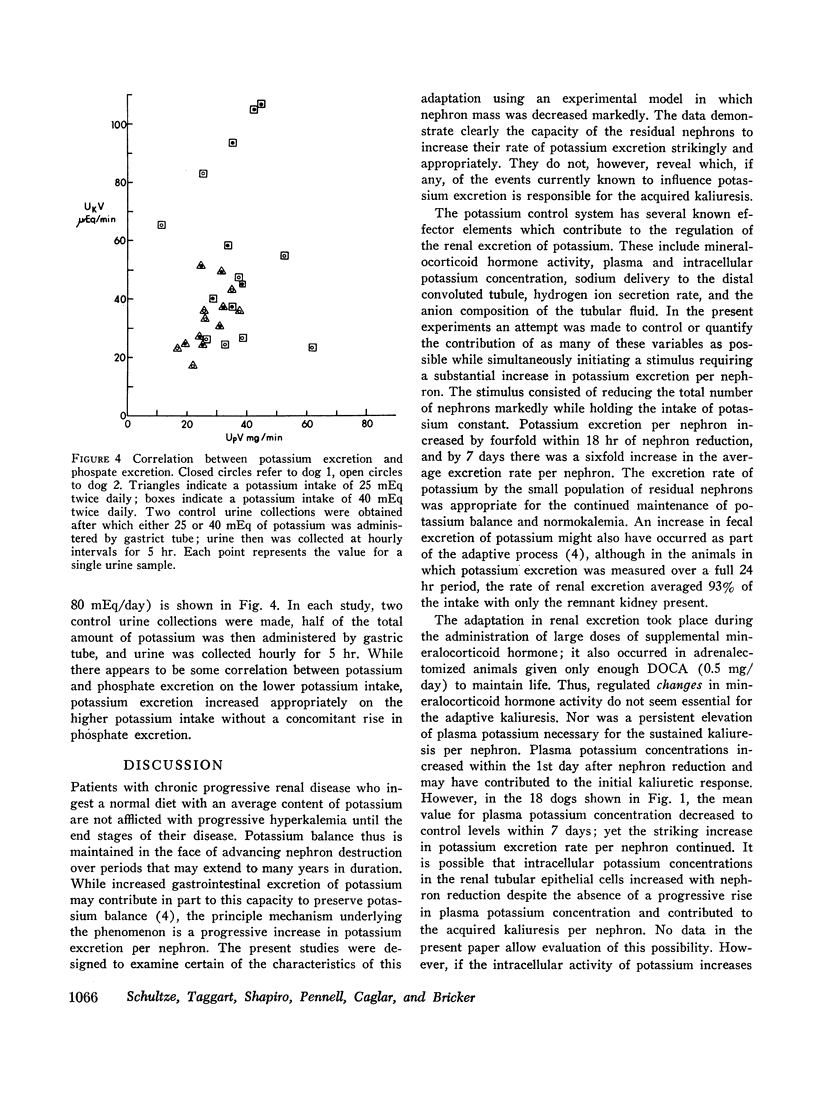
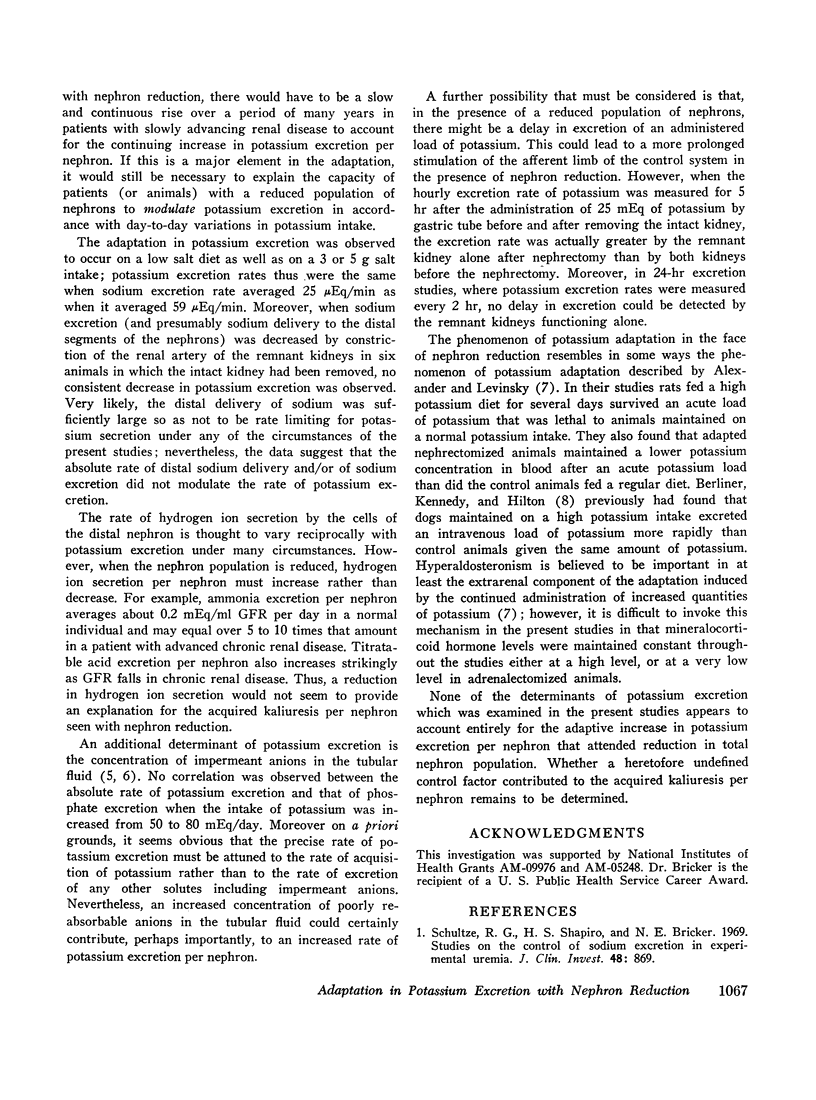
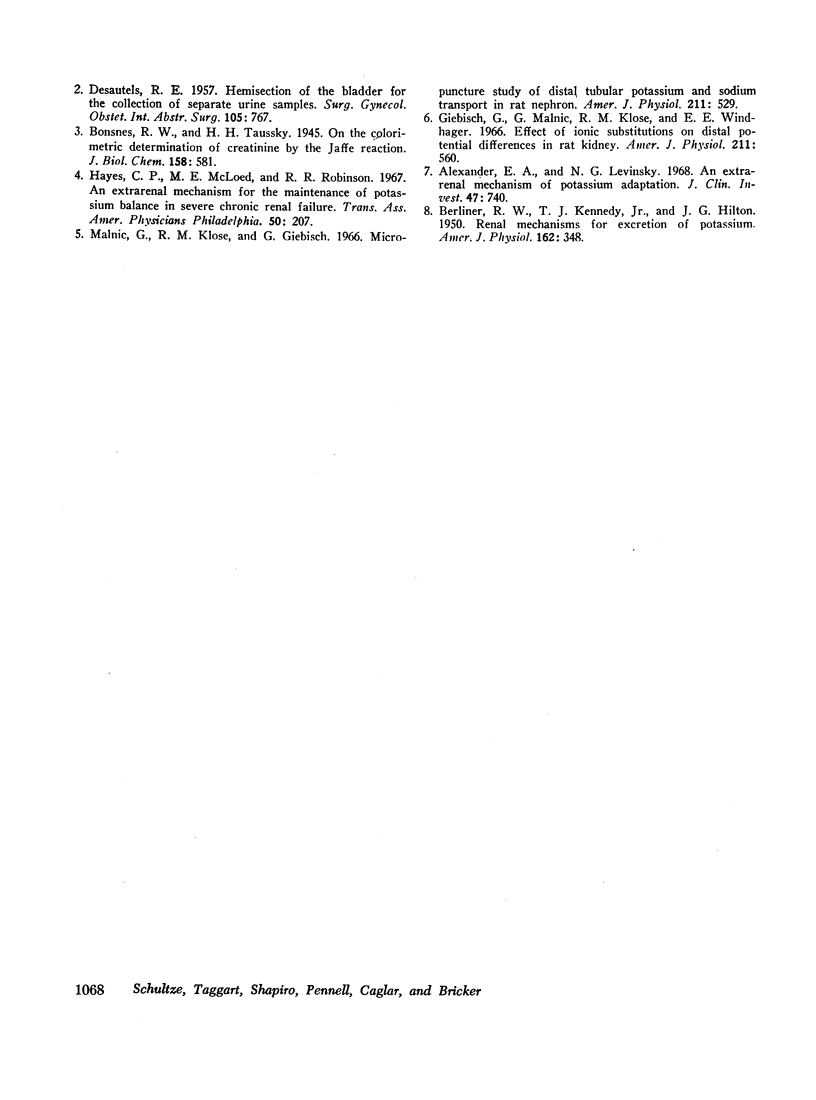
Images in this article
Selected References
These references are in PubMed. This may not be the complete list of references from this article.
- Alexander E. A., Levinsky N. G. An extrarenal mechanism of potassium adaptation. J Clin Invest. 1968 Apr;47(4):740–748. doi: 10.1172/JCI105769. [DOI] [PMC free article] [PubMed] [Google Scholar]
- BERLINER R. W., KENNEDY T. J., Jr, HILTON J. G. Renal mechanisms for excretion of potassium. Am J Physiol. 1950 Aug 1;162(2):348–367. doi: 10.1152/ajplegacy.1950.162.2.348. [DOI] [PubMed] [Google Scholar]
- DESAUTELS R. E. Hemisection of the bladder for the collection of separate urine samples. Surg Gynecol Obstet. 1957 Dec;105(6):767–768. [PubMed] [Google Scholar]
- Giebisch G., Malnic G., Klose R. M., Windhager E. E. Effect of ionic substitutions on distal potential differences in rat kidney. Am J Physiol. 1966 Sep;211(3):560–568. doi: 10.1152/ajplegacy.1966.211.3.560. [DOI] [PubMed] [Google Scholar]
- Hayes C. P., Jr, McLeod M. E., Robinson R. R. An extravenal mechanism for the maintenance of potassium balance in severe chronic renal failure. Trans Assoc Am Physicians. 1967;80:207–216. [PubMed] [Google Scholar]
- Malnic G., Klose R. M., Giebisch G. Micropuncture study of distal tubular potassium and sodium transport in rat nephron. Am J Physiol. 1966 Sep;211(3):529–547. doi: 10.1152/ajplegacy.1966.211.3.529. [DOI] [PubMed] [Google Scholar]
- Schultze R. G., Shapiro H. S., Bricker N. S. Studies on the control of sodium excretion in experimental uremia. J Clin Invest. 1969 May;48(5):869–877. doi: 10.1172/JCI106045. [DOI] [PMC free article] [PubMed] [Google Scholar]



